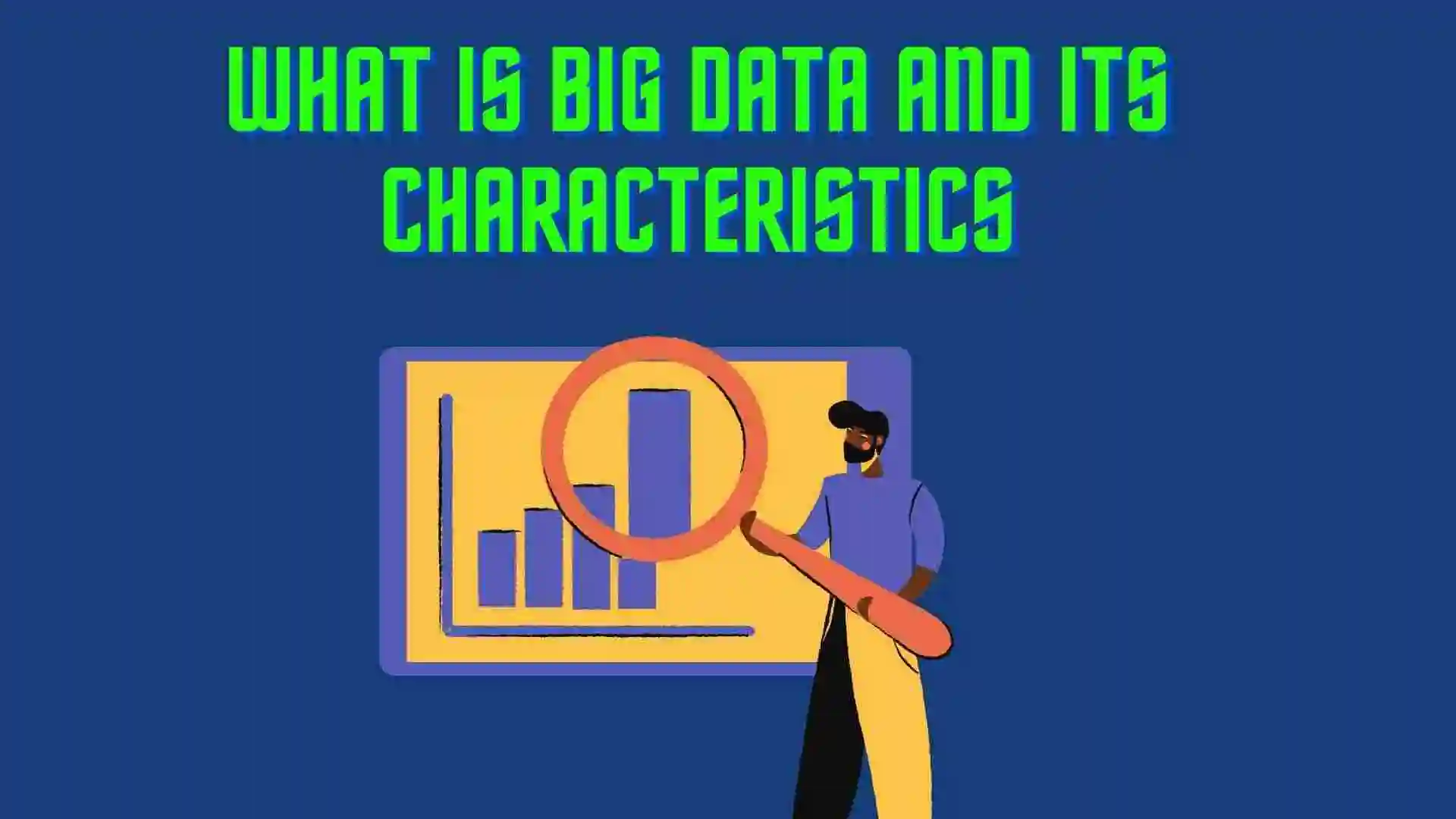In this blog, we will see the different ways of storing data, like which way is best to store traditional or Big Data. Along with that, we will see the advantages and disadvantages of both. So let’s get started with the blog.
Table of Contents
- Introduction
- Characteristics
- Types of Big Data
- Challenges for Big Data
- Introduction to Traditional Data
- Challenges for Traditional Data
- Difference between Conventional Data and Big Data
- FAQ
- Related Articles on Computer Networks
- Related Articles to Ethical Hacking
Introduction
Big data refers to large and complex data sets that are beyond the capabilities of traditional data processing technologies and tools to capture, store, manage, and analyze.
It is characterized by the volume, velocity, and variety of data, as well as the need for real-time processing and analysis.
The term “big data” generally refers to data sets that are too large, too complex, or too rapidly changing for traditional data processing tools to handle.
The sources of big data include social media, mobile devices, sensors, and online transactions, among others.
Big data technologies and platforms are designed to handle the scale and complexity of big data, such as Hadoop, Spark, and NoSQL databases. These technologies enable organizations to store, process, and analyze big data, extract insights, and make data-driven decisions.
Big data has numerous applications in various industries, such as healthcare, finance, retail, and manufacturing.
For Example:
Health Sector:
Big data analytics can be used to improve patient outcomes in healthcare by analyzing electronic health records, clinical trials, and medical imaging data.
Finance Sector:
In finance, big data analytics can be used to detect fraudulent activities, predict market trends, and personalized investment advice.
Overall, big data is transforming the way organizations operate and make decisions, and it is expected to continue to have a significant impact on various industries in the future.
Characteristics
Big data is a term used to describe large and complex sets of data that are difficult to process using traditional data processing techniques. Some of the key characteristics of big data are:
A) Variety
Big data comes in many different formats, such as structured, semi-structured, and unstructured data. This variety requires flexible tools and techniques that can handle different types of data.
It could be saved in a database, an Excel sheet, a CSV file, an Access database, or simply a plain text file.
Sometimes the data isn’t even in the usual format we anticipate; it could be a video, SMS, pdf, or another type we haven’t thought about.
It is up to the organization to organize it and make it relevant. If the data is in the same format, it will be easy, but this isn’t always the case.
The issue we must solve with Big Data is the range of data types present in the real world.
B) Velocity
Big data is generated and collected at a rapid pace, often in real-time. This requires tools and techniques that can process and analyze data quickly.
Our understanding of data has changed as a result of social media and data growth.
These days, people respond on social media to be informed about events. Users on social media may not be interested in tweets, status updates, etc. that are a few seconds old.
They frequently erase outdated communications and concentrate on new developments. With the update window now just a few hundredths of a second, data transfer is now almost real-time. This high-speed data is an example of big data.
C) Volume
Big data refers to datasets that are so large that they require specialized tools and techniques to manage, store, and process.
The exponential growth of data storage occurs when data expands beyond text-only information.
The data is available on our social media sites in the form of movies, music, and massive images. Business storage systems are increasingly using storage capacities of terabytes and petabytes.
The applications and architecture created to serve the database must be regularly reevaluated as its size grows.
The data explodes as new intelligence is discovered, even when the original data is unchanged when it is re-evaluated from various angles.
Types of Big Data
Big Data can be classified into three main types based on their sources and characteristics:
A) Structured Data:
One category of huge data is structured data. Data that can be consistently processed, stored, and retrieved is referred to as structured data.
It refers to information that is clearly organized and that can be quickly and readily recorded in a database and searched using standard search engine techniques.
For Example:
Employee Table that can store the information of employees in the table, which consists of name, position, and salary.
| ID | Employee Name | Position | Salary |
|---|---|---|---|
| 1 | Sam | HR | 1800 |
| 2 | Travis | Developer | 2500 |
| 3 | Copper | Tester | 2200 |
B) Unstructured Data:
Unstructured Data is not organized and is difficult to process. It is usually found in text documents, emails, social media posts, and multimedia files.
Unstructured data requires advanced data processing tools and techniques like natural language processing (NLP) and machine learning (ML) to be analyzed.
Examples include text documents, videos, images, and social media posts.
C) Semi-structured Data:
This type of data is partially organized and partially unorganized. It is usually found in XML and JSON files, log files, and sensor data.
Semi-structured data requires both traditional data processing tools and advanced techniques like NLP and ML to be analyzed. Examples include sensor data, log files and metadata.
To be more precise, it refers to data that contains vital information or tags that divide various parts of the data into discrete buckets even though it is not categorized under a certain repository (database).
For Example:
<rec>
<name> Travis </name>
<age> 23 </age>
</rec>Challenges for Big Data
Data management:
Storing, processing, and managing massive volumes of data can be a significant challenge, especially when dealing with unstructured data from multiple sources. This requires specialized infrastructure and tools to manage and analyze the data effectively.
Data quality:
It is often collected from multiple sources and can be of varying quality, which can lead to inaccurate analysis and decision-making. Data cleansing and normalization are important steps in ensuring the quality of big data.
Data privacy and security:
It often contains sensitive information, such as personal data, financial information, and intellectual property, which can be vulnerable to security breaches and cyber-attacks. Organizations must implement strong data security measures to protect against these risks.
Integrating data from a spread of sources:
Integrating data from multiple sources can be challenging, as the data may be structured differently and use different formats. Data integration tools are necessary to unify the data and make it usable for analysis.
Introduction to Traditional Data
Traditional data in a relational database management system (RDBMS) refers to structured data that is arranged in a predefined manner. This kind of data is often maintained in tables with predefined columns and rows and consists of numbers, text, and dates.
In commercial and financial applications, traditional data is frequently utilized for accounting, inventory control, and customer relationship management (CRM).
Additionally, it is employed in government and academic studies, where it is used to store statistical data and data on demographics.
One of the main advantages of traditional data is that it can be easily queried using SQL (Structured Query Language), a standard programming language for managing relational databases. This allows for efficient data retrieval and analysis, as well as the creation of reports and visualizations.
However, traditional data has limitations when it comes to handling unstructured data, such as text, images, and videos.
Challenges for Traditional Data
While traditional data has been widely used for many years, it is not without its challenges. Some of the main challenges of traditional data include:
Limited flexibility:
Traditional data is typically structured and organized in a pre-defined manner, which means it can be inflexible when it comes to accommodating new data types or changing data structures.
Limited scalability:
Traditional data management systems can struggle to handle very large data sets or a high volume of data transactions, leading to performance issues and slow response times.
Limited analytical capabilities:
Traditional data management systems are often limited in their ability to perform complex data analysis, especially when it comes to processing unstructured data or analyzing data in real time.
Security risks:
Traditional data management systems can be vulnerable to security breaches and data loss, especially if they are not properly secured or maintained.
Difference between Conventional Data and Big Data
| Big Data | Conventional Data |
|---|---|
| It has huge Data Set. | In Conventional Data, Data Set Size is under control. |
| It contains unstructured data such as text, audio, file, etc. | It contains structured data. |
| The aggregated or sampled or filtered data | It contains raw transactional data. |
| Big data analysis requires the ability to perform analysis as well as programming skills (like Java). | For conventional data, analytical skills are sufficient; for advanced analysis tools, expert programming skills are not necessary. |
| Because of the huge data, it is hard to perform queries. | In this, relatively easy to perform query. |
| Need tools like Hadoop, Pig, etc. | Need tools like R, SQL, Excel, etc. |
FAQ
Big data refers to large and complex data sets that are beyond the capabilities of traditional data processing technologies and tools to capture, store, manage, and analyze.
It is characterized by the volume, velocity, and variety of data, as well as the need for real-time processing and analysis.
The term “big data” generally refers to data sets that are too large, too complex, or too rapidly changing for traditional data processing tools to handle.
Characteristics of Big Data are Volume, Velocity, and Variety.
It is a term used to describe large and complex sets of data that are difficult to process using traditional data processing techniques. Some of the key characteristics of big data are:
A) Variety
Big data comes in many different formats, such as structured, semi-structured, and unstructured data. This variety requires flexible tools and techniques that can handle different types of data.
B) Velocity
Big data is generated and collected at a rapid pace, often in real-time. This requires tools and techniques that can process and analyze data quickly.
C) Volume
Big data refers to datasets that are so large that they require specialized tools and techniques to manage, store, and process.
Related Articles on Computer Networks
- Introduction to Computer Networking | What is Computer Network
- What are Topology & Types of Topology in Computer Network
- What is FootPrinting in Cyber Security and its Types, Purpose
- Introduction to Cloud Computing | What is Cloud Computing
- Distributed Shared Memory and its advantages and Disadvantages
- What is VPN? How doe VPN Work? What VPN should I use?
- What is an Internet and How the Internet Works
- What is a Website and How Does a Website or web work?
- Introduction to Virus and different types of Viruses in Computer
- What is TCP and its Types and What is TCP three-way Handshake
- What is UDP Protocol? How does it work and what are its advantages?
- What is an IP and its Functions, What is IPv4 and IPv6 Address
- What is MAC Address and its Types and Difference MAC vs IP
- What is ARP and its Types? How Does it Work and ARP Format
- Sessions and Cookies and the Difference Between Them
- What is ICMP Protocol and its Message Format?


